

The Buddhist goddess Marichi appears in many forms. As the Goddess of the Dawn, one of her most common forms, she is depicted her in the chariot of the sun pulled by seven pigs, removing obstacles with her radiant light [...]
__large-original-ratio.jpg)
Tara is by far the most popular goddess in Tibet and often considered a female Buddha. In one of her origin stories, the bodhisattva Avalokiteshvara is [...]
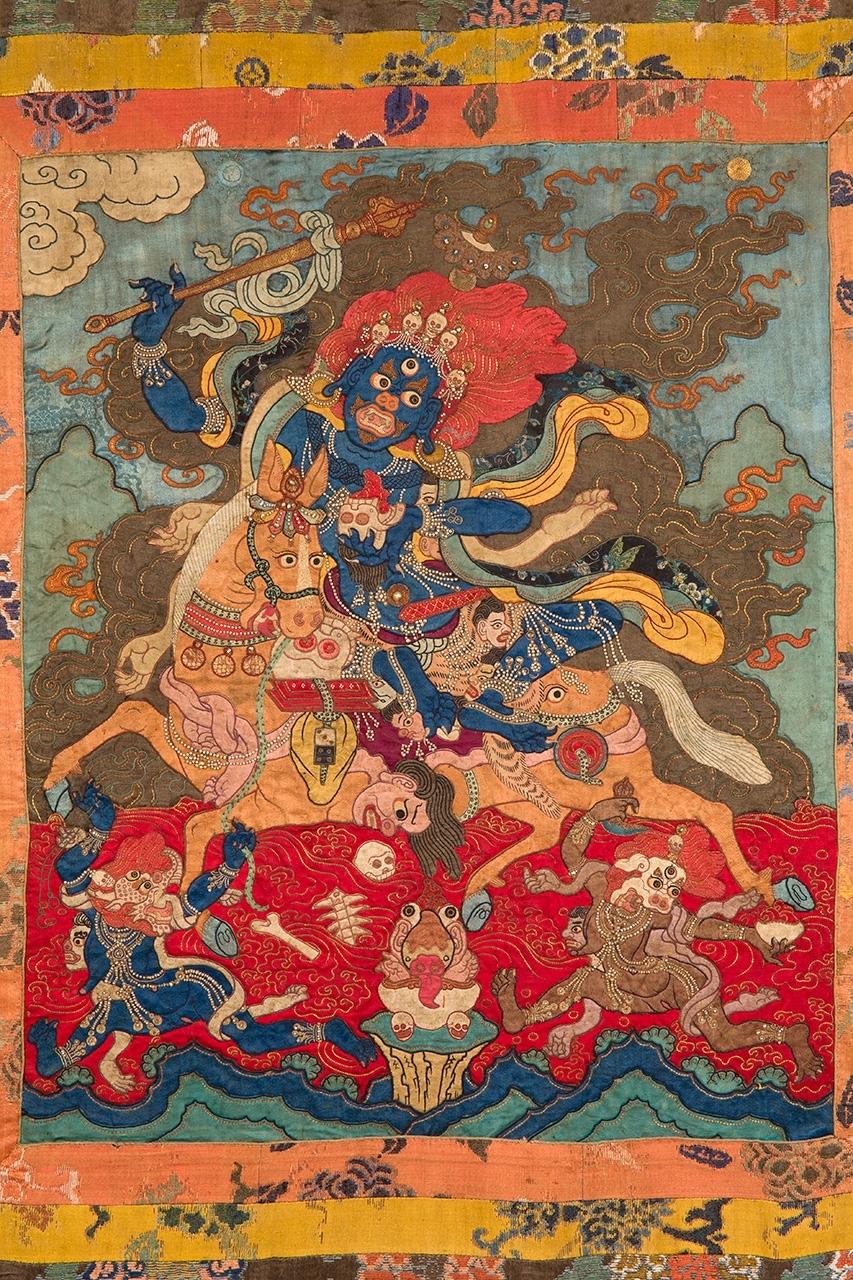
Magzor Gyalmo (Mongolian: Chog tegulder okin tngri), Queen Who Repels Armies, is a wrathful emanation of the goddess Sarasvati and the special protector of the Dalai Lamas [...]
__large-original-ratio.jpg)
This sculpture is attributed to the hand of Choying Dorje (1604–1674), the Tenth Karmapa, who was head of the Karma Kagyu School of Tibetan Buddhism. An eccentric [...]
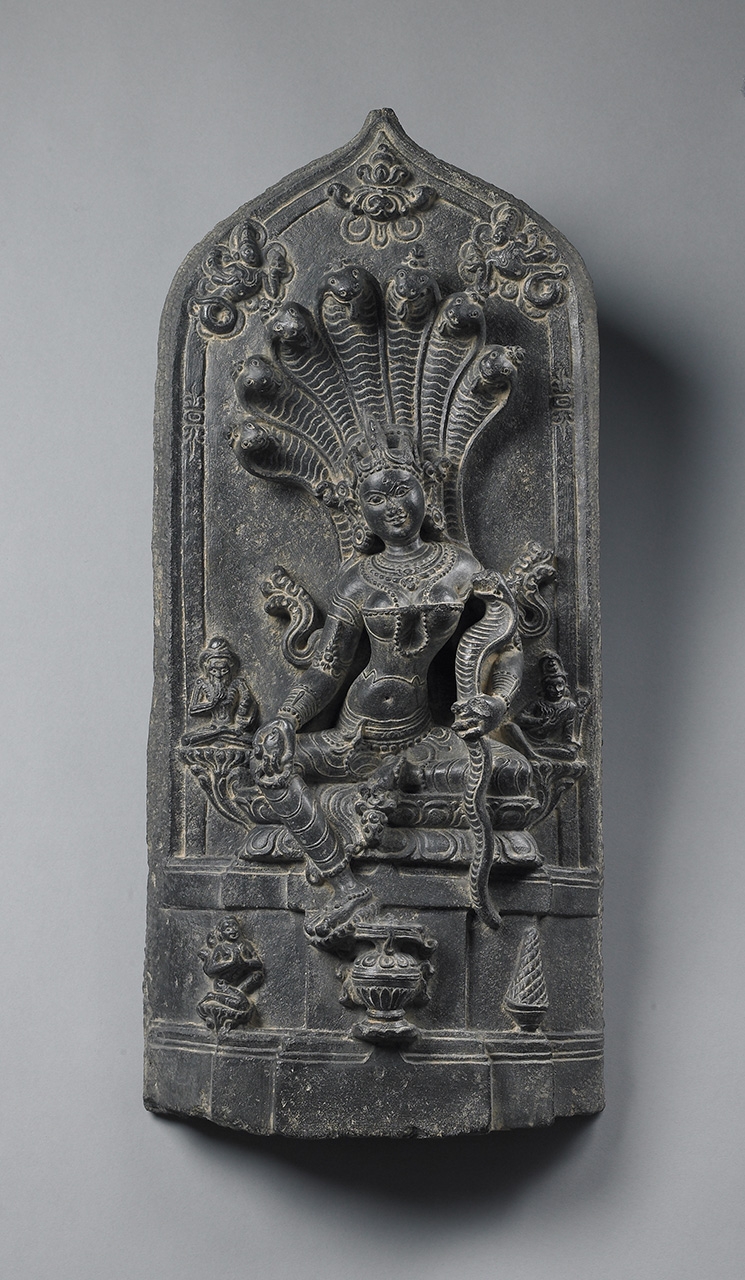
The central figure on this small stone stele is Manasa, a goddess venerated in the Hindu traditions of Bengal in northeastern India. She is worshiped primarily for her ability to prevent and cure snakebites [...]

The Buddhist goddess Marichi appears in many forms. As the Goddess of the Dawn, one of her most common forms, depicts her in the chariot of the sun pulled by [...]
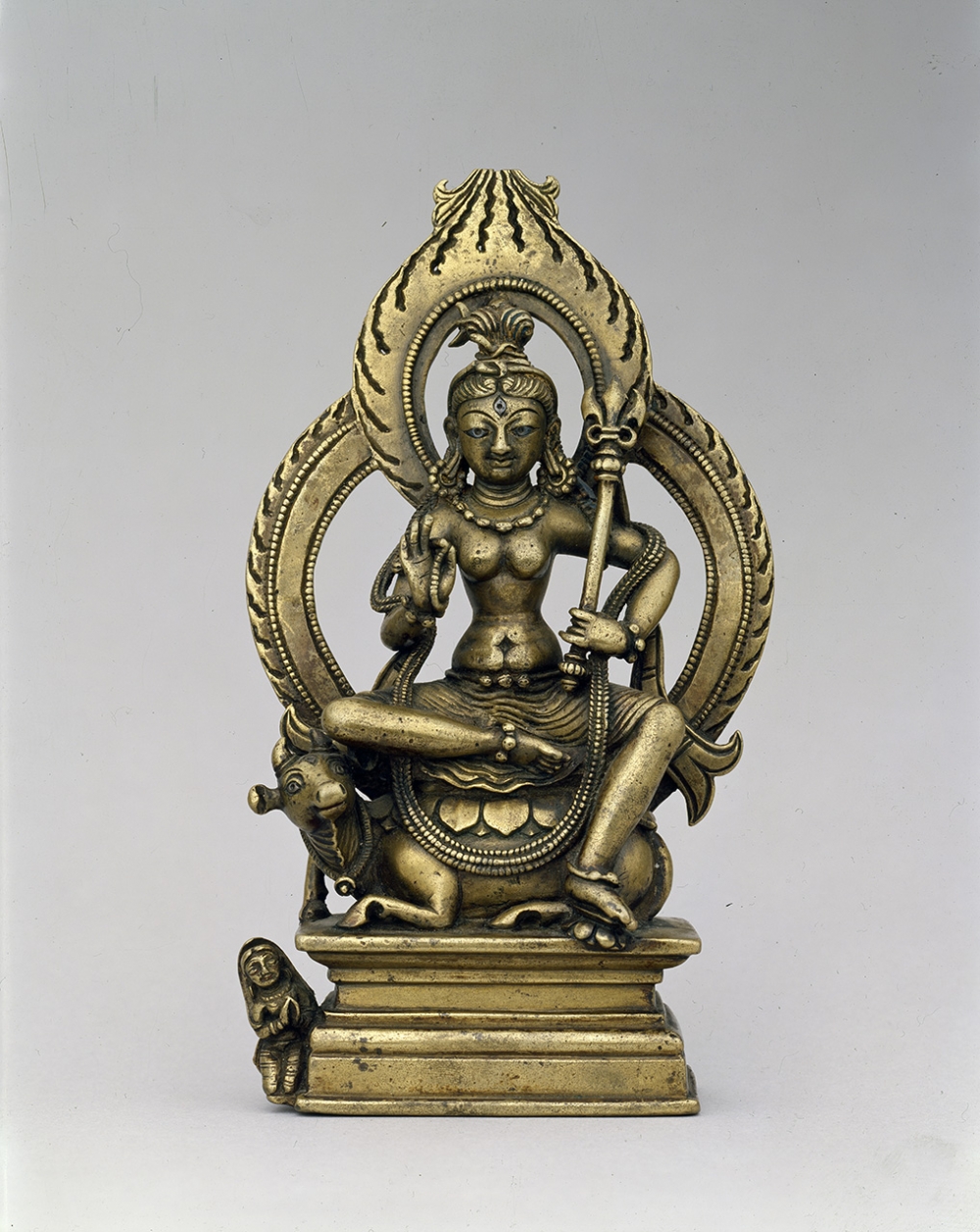
Parvati, sometimes called Uma, is a Hindu goddess and the daughter of Himavat, the embodiment of the Himalayan Mountains. She is also the consort of Shiva [...]
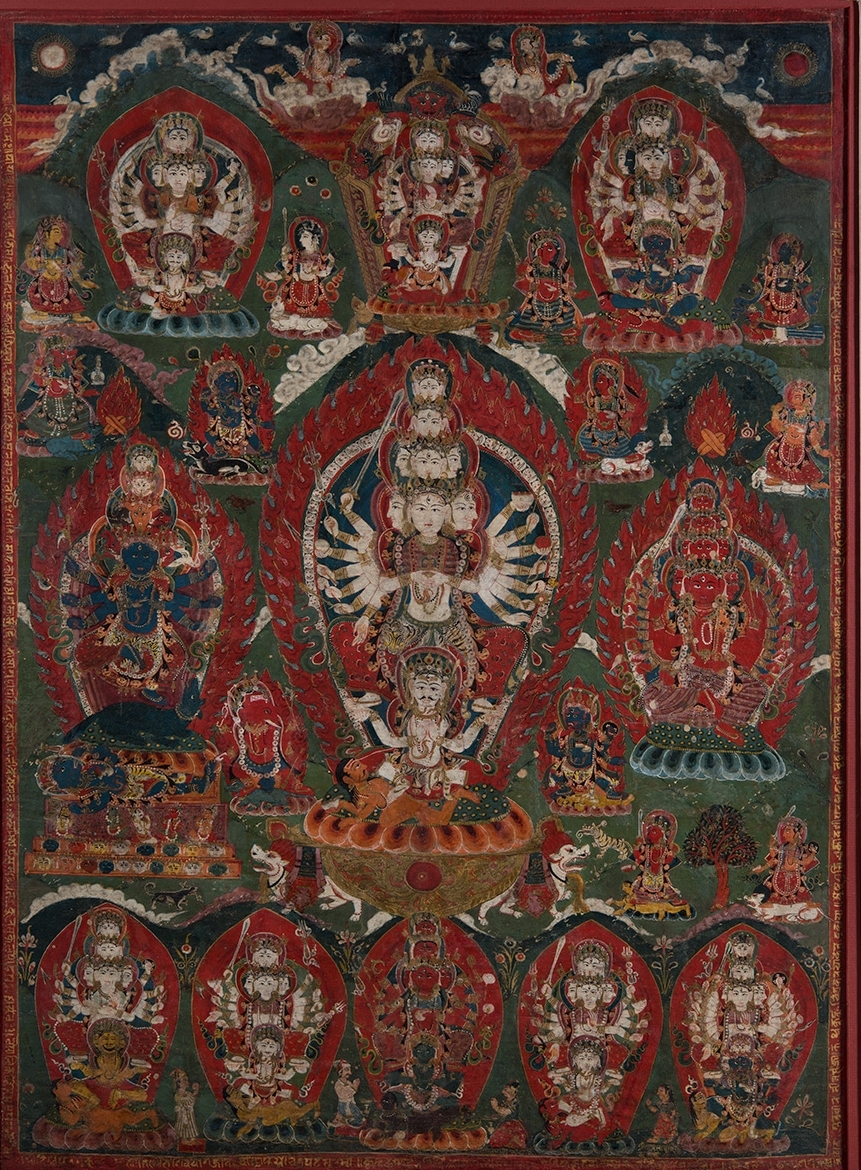
The fierce Siddha Lakshmi, a wrathful manifestation of the Hindu goddess Durga, was the protecting and guiding goddess of the Malla kings [...]

This double-sided banner shows two matrika, mother goddesses that represent the female counterparts of the great Hindu gods and the embodiments of those gods’ energies[...]
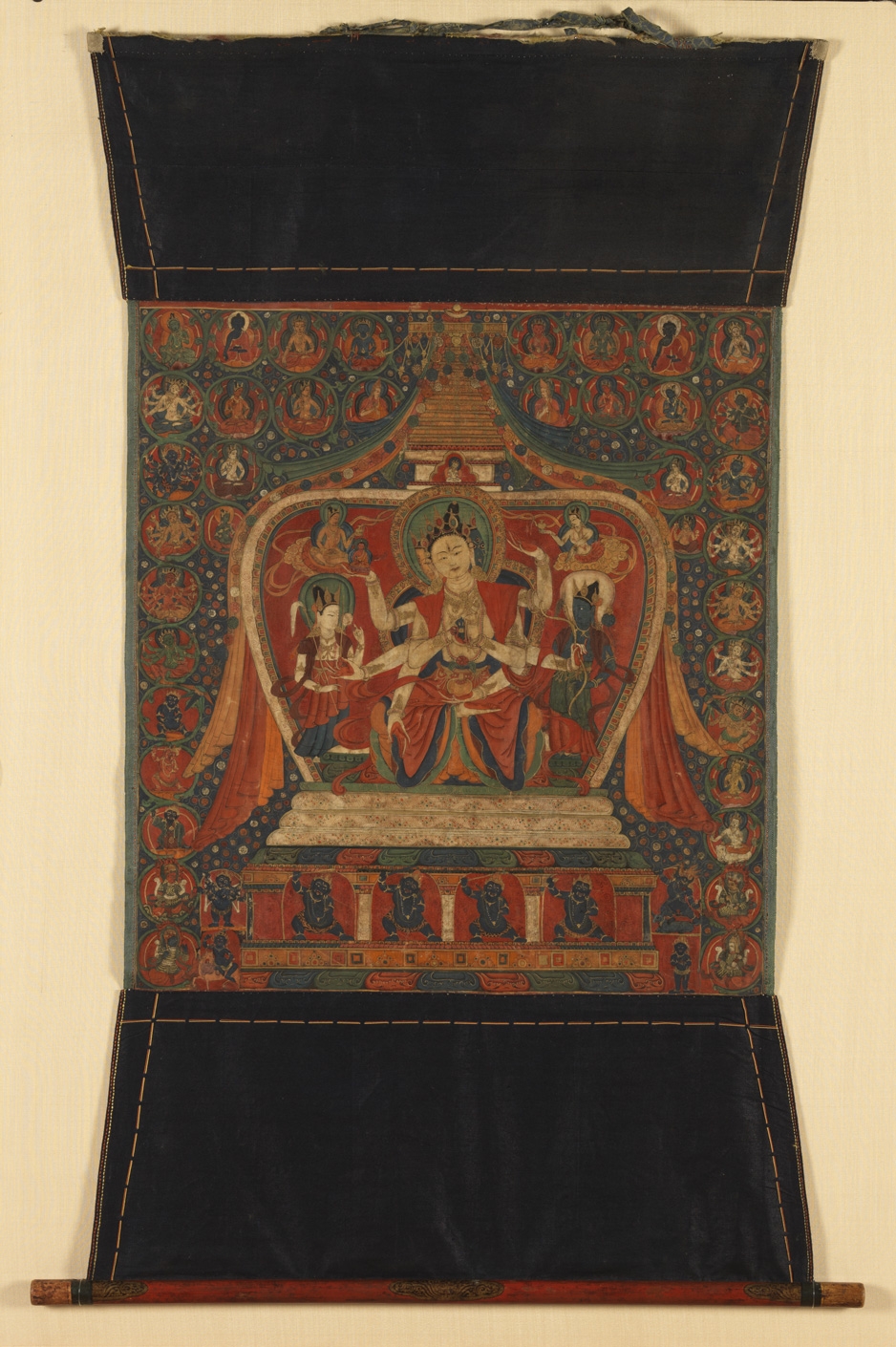
The eight-armed goddess Ushnishavijaya resides at the center of this painting inside a richly ornamented stupa. She is one of the three Buddhist deities of long life, along with White Tara and Amitayus. She became popular in Tibet and the Himalayas in the fourteenth century, where she can be found depicted in portable paintings (thangkas), temple murals, and three-dimensional stupas.
In this painting Ushnishavijaya is flanked by the bodhisattvas Avalokiteshvara (white) and Vajrapani (blue) as well as two small celestial deities floating on clouds and bathing her in nectar. A small image of Vairochana, the Buddha from which Ushnishavijaya emanates, sits directly above her within a trefoil-arched niche. Four blue protectors stand in the arched base of the stupa, while numerous deities ensconced in scrolling lotus vine roundels are neatly arranged around the stupa.
This painting is among the most beautiful depictions of Ushnishavijaya in the architectural frame of a stupa. The lavish decorative elements offer strong visual appeal—the dense coloration, flowing textiles and floral garlands, sumptuous jewelry, and small blossoms that fill the background. This painting is also important because it reflects the intersection of Tibetan and Nepalese painting styles during the fifteenth century.
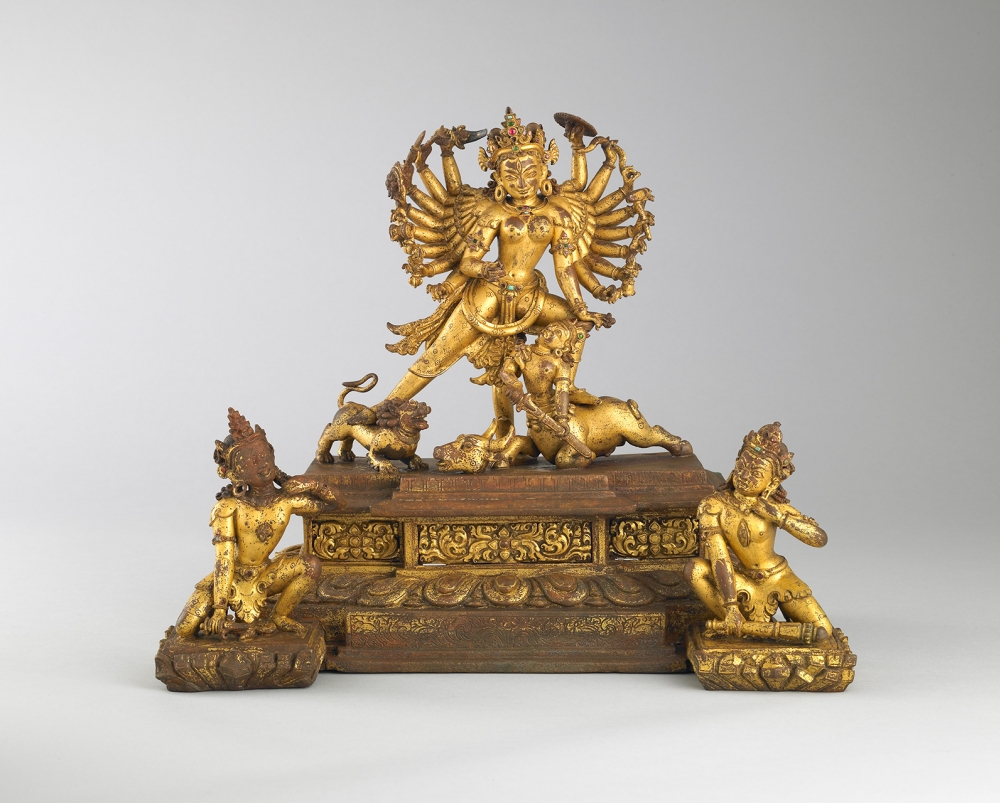
This sculpture of the Hindu goddess Durga defeating a buffalo demon is one of the finest examples of Nepalese craftsmanship in the Rubin Museum’s collection. Standing just less than eleven inches high, this sculpture is a visitor and staff favorite. It captures a moment in the legendary story of the goddess. Bent on upsetting the order of the world, the buffalo demon Mahisha declared, “I will be defeated by no man by day or by night!” But what about a woman defeating him at dusk? Durga took on the role of heroine, and with the weapons of her fellow gods, she defeated Mahisha.
This form of Durga has eighteen arms, each holding a ritual implement. Her arms recede from large and long in the front to smaller and shorter as they go backward, creating a feeling of dynamic motion and perspective. Depicted in a warrior stance, Durga’s right leg is supported by a snow lion while her left leg pins down the buffalo demon. The demon is in the process of shape-shifting from his buffalo form into a humanlike form. To add to the dynamism of the object, two of the demon’s minions, with weapons piercing their chests, form a perfect triangle with Durga. The triangle is a common form in this type of art and serves to draw the eye straight up to Durga’s calm, delicate face.
— David Rosenberg, Gallery Guide Program Coordinator
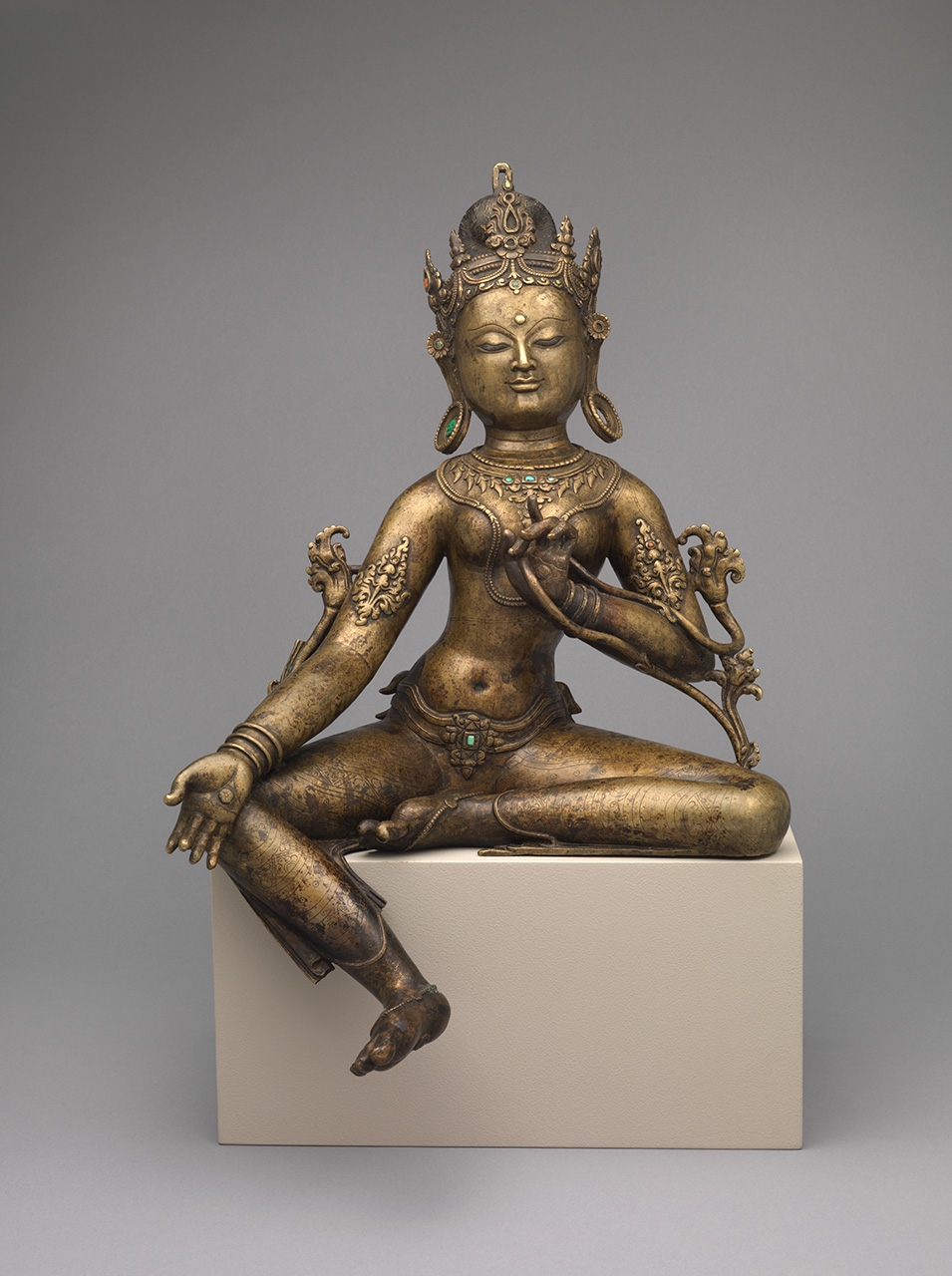
The enlightened female Tara (known in Tibetan as Drolma or “she who liberates”) has many forms, represented by different colors. The most popular forms are White Tara and Green Tara, depicted here. It is common for 21 forms of Tara to be represented together. Green Tara is understood in some contexts to be a bodhisattva, on her way to enlightenment, and in other contexts she is seen as a fully enlightened Buddha. She is associated with overcoming all kinds of obstacles. This 13th century sculpture was made in Tibet and shows how important the influence of Indian artistic style was in Tibetan art. Notice the relatively large head, firmly grounded posture, and gentle sense of motion. These traits suggest the qualities of kindness, maternal care, and powerful beauty associated with Tara.
